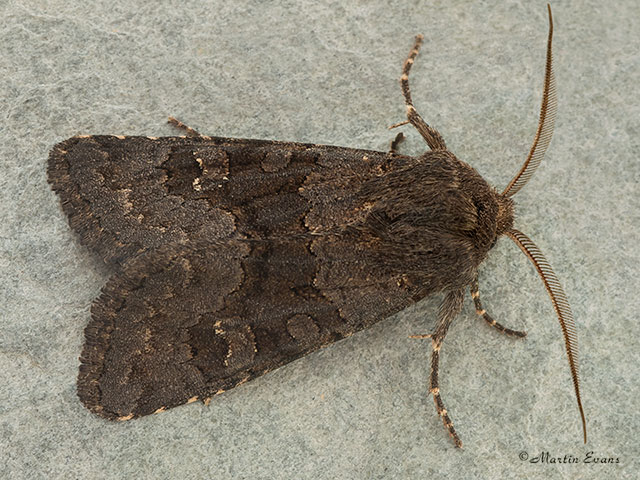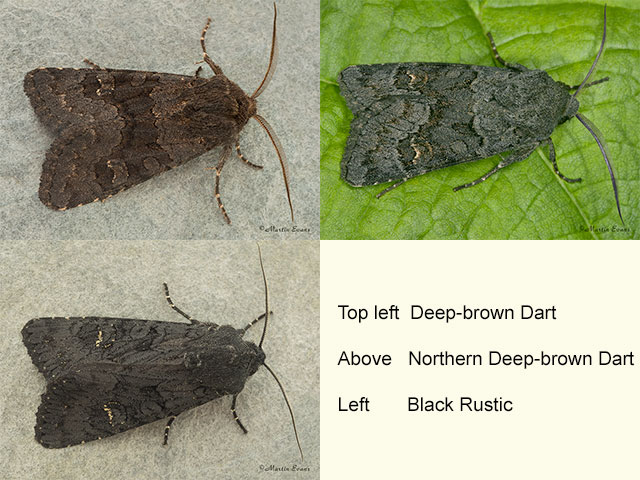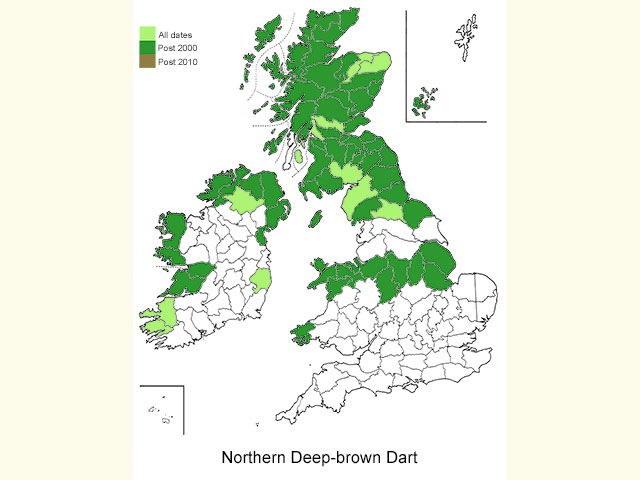Noctuidae
73.232 Deep-brown Dart Aporophyla lueneburgensis (Freyer, 1848)
Northern Deep-brown Dart (colour form)
Common
Similar species: The Northern Deep-brown Dart is on average slightly smaller (15 to 17mm) and grey and black rather than mid to dark-brown. Black Rustic Aporophyla nigra is a very dark-brown to black moth, rather than dark brown or grey and black. The males have serrated rather than feathered antennae.
Forewing: 15 to 18mm
Habitats: Open grassland, calcareous downland, rough grassland, hay-meadows, broad woodland rides, heathland, coastal sand-dunes and gardens.
The Northern Deep Brown Dart is found on moorland, rough grassland, rocky areas inland and rocky coastland.
Habits: The moth nectars at flowers and comes to sugar and light.
Foodplant: The larva feeds nocturnally on Heather, Bilberry, Common Bird's-foot Trefoil, grasses and other herbaceous plants, hiding low down in the herbage during the day. In the north it feeds on Heather, Bilberry, Common Bird's-foot Trefoil and grasses. It hides low in the herbage during the day. The full-fed larva spins a cocoon under the soil where it rests for several weeks before pupating.
On the European mainland it has also been recorded feeding on stitchworts, Salad Burnet, Forget-me-not, Bulbous Buttercup and Dyer's Greenweed.







